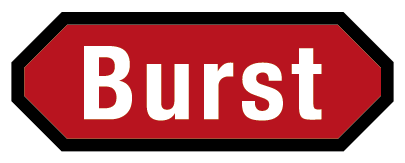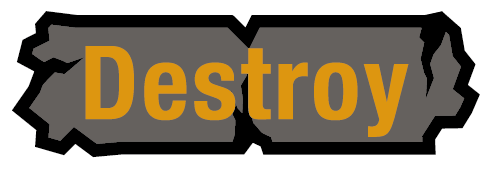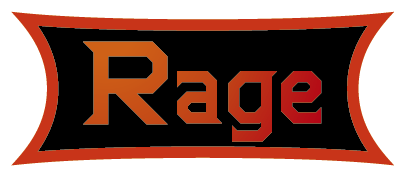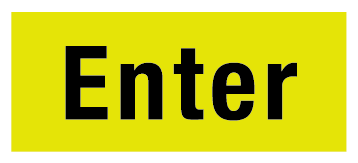A
-
Adjacent Zones
-
Zones connected horizontally or vertically are called adjacent zones. For example, zone 7 is adjacent to zones 4, 6, and 8.
- Search Q&A
-
Advance during the End Phase
-
Monster cards advance 1 zone during the End Phase. This advance does not count as an invasion, so it cannot result in a Victory through Invasion.
- Search Q&A
-

Awakening
-
An ability that becomes active when your monster card is in or beyond a specific zone. For example, [Awakening 5] becomes active when your monster is in zone 5–8.
- Search Q&A
B
-
Battle Card
-
Battle Cards are placed in zones to counter the opponent’s monster cards. Cards labeled “Battle” in the upper-right corner are battle cards.
- Search Q&A
-
Battle Card Rank
-
The rank of a battle card determines the condition for playing it. You can play a battle card if its rank is equal to or lower than the zone number of the opposing monster. The closer the monster is, the stronger the battle card you can play. If there is already a battle card in the zone, the new card replaces it, and the old card is destroyed and discarded.
- Search Q&A
-

Burst
-
An ability that allows you to play a monster card from your hand if its rank matches the number next to the Burst icon. At the start of the End Phase, the monster returns to its original form, and the card played via the Burst ability is sent to the discard pile.
- Search Q&A
C
-
Counter
-
Attempting to counter your opponent’s monster card using the battle cards in your zones. During the Counter Phase, if the total counter power of your battle cards equals or exceeds the opposing monster’s threat, it is a Successful Counter!
- Search Q&A
-
Counter Phase
-
Attempt to counter the opponent’s monster card using the battle cards in your zones.
- Search Q&A
-
Counter Power
-
A numerical value on battle cards. If the total counter power of battle cards in a zone equals or exceeds the opposing monster card’s threat, it results in a Successful Counter.
- Search Q&A
-
Crush
-
If a monster card moves into a zone occupied by a battle card—whether by advancing or retreating—that battle card is crushed and destroyed.
- Search Q&A
D
-
Decrease this card's [RAGE] by 1
-
Some abilities may reduce your Rage. It cannot go below 0.
- Search Q&A
-

Destroy
-
Sending a battle card in a zone to the discard pile. Even outside of card effects, when a monster card advances or retreats to the zone, any battle card in that zone is destroyed.
- Search Q&A
-
Discard Pile
-
The place where destroyed cards or discarded cards from the hand are placed.
- Search Q&A
E
-
End Phase
-
This phase ends your turn. Perform the following steps:
① Advance your monster card by 1 zone
② Draw until you have 5 cards in hand - Search Q&A
-

Evolution
-
An ability that lets you stack a matching battle card from your deck to play it. This card can power up during your next turn.
- Search Q&A
F
-
Failed Counter
-
Even if a counter fails due to insufficient counter power, your battle cards are not destroyed.
- Search Q&A
H
I
-
Increase this card's [RAGE] by 1
-
During your Main Phase, you may discard a monster card from your hand to gain 1 Rage. You can do this any number of times, regardless of rank. There is no upper limit. If an ability increases Rage, you do not need to discard a card.
- Search Q&A
-
Invade
-
Once per Main Phase, discard a card to advance your monster. “1” icon advances 1 zone; “2” icon advances 2 zones. Advancing past zone 8 results in a Victory through Invasion!
- Search Q&A
-

Invade [2]
-
The number shown in the footprint icon at the bottom-left of each card. The invasion icon indicates how many zones your monster card will advance when that card is discarded for invasion.
A card with “1” advances 1 zone; “2” advances 2 zones.
Cards with a 2-icon are stronger for invasion but you may only include up to 10 of them in your deck. - Search Q&A
M
-
Main Deck
-
Your main deck must contain exactly 50 cards, all of which must either match the color of your Rank I monster or be colorless (white). Cards with a “2” in the footprint icon may only be included up to 10 copies total.
- Search Q&A
-
Main Phase
-
You may take various actions such as invading and playing cards. Do the following in any order:
① Play a battle card from your hand.
② Play a strategy card from your hand.
③ Play a monster card from your hand (once per turn).
④ Discard a monster card to increase Rage.
⑤ Discard a card to invade (once per turn). - Search Q&A
-
Monster Card
-
Monster Cards are both the protagonist and antagonist of the game. Cards labeled “Monster” in the upper-right corner are monster cards.
- Search Q&A
-
Monster Deck
-
Each player prepares 4 monster cards, one of each rank (I–IV), forming a monster deck separate from the main deck. All cards must be of the same color.
- Search Q&A
-
Monster Deck Zone
-
The Monster Deck Zone is where you place your 4 monster cards. When your monster is countered, the next one appears from here, in a stronger form.
- Search Q&A
O
P
-
Play a Monster Card
-
Once per Main Phase, you may play a monster card from your hand that has the same rank as your current monster. If you do, increase monster card's Rage by 1 as a bonus.
- Search Q&A
-
Playing a new monster card
-
When a monster card is countered, it reappears in a stronger form from the monster deck. If your opponent cannot play another monster card, you win by Victory through Countering!
- Search Q&A
R
-

Rage
-
[Rage] temporarily strengthens monster cards. Each Rage increases threat level by +5000. Your Rage resets to 0 during your Start Phase.
- Search Q&A
-
Rank
-
One of the numerical values on a card. Higher ranks are harder to play but have stronger effects.
- Search Q&A
-
Reshuffle
-
If there aren’t enough cards in your deck when drawing, shuffle your discard pile to form a new deck. For example, if you draw 3 cards but your deck only has 1, draw that card first, then shuffle your discard pile to create a new deck, and draw the remaining 2 cards from it.
- Search Q&A
S
-
Same Column
-
Zones that are aligned vertically across both sides are called the same column. For example, your zones 3 and 8 and your opponent’s zones 8 and 3 are in the same column.
- Search Q&A
-
Stacked Cards
-
When a card is stacked (e.g., from evolution), only the topmost card's ability is active.
- Search Q&A
-
Start Phase
-
This phase begins each turn. Perform the following steps:
① Draw cards equal to the rank of your opponent’s monster card.
② Discard your own strategy cards if they are present.
③ Reset your Rage to 0. - Search Q&A
-
Strategy Card
-
Strategy Cards provide temporary advantages through various effects. They are placed horizontally, unlike monster and battle cards.
- Search Q&A
-
Strategy Card Rank
-
The rank of a strategy card determines the condition for playing it. You may use a strategy card if its rank is equal to or lower than the zone your monster occupies. The more your monster advances, the stronger strategy cards you can use.
- Search Q&A
-
Strategy Zone
-
The area where strategy cards are placed. You may place up to 2 per turn. They are discarded during the Start Phase.
- Search Q&A
-
Successful Counter
-
If a counter is successful, the opponent’s monster card is pushed back to a previous zone! For example, from zone 8 to 3, from zone 7 to 4, and from zone 6 to 5.
- Search Q&A
T
-
Threat
-
A numerical value on monster cards. The higher the number, the harder it is to counter.
- Search Q&A
-

Traits
-
A trait shared by monster and battle cards, listed below the card name (e.g., “Godzilla,” “Mothra”). Traits are mainly referenced by card effects.
- Search Q&A
-
Turn
-
A “turn” refers to one round of play. Players alternate taking actions during their respective turns.
- Search Q&A
V
-
Victory through Countering
-
If you counter your opponent’s monster four times, you win the game.
- Search Q&A
W
-

When Invading
-
An ability that activates when your monster card advances as a result of an invasion during the Main Phase. This effect activates after all advancement from the invasion is complete. If the monster advances two zones, the effect activates twice.
- Search Q&A
Y
Z
-
Zone 8
-
If there is a battle card in zone 8, it can block your opponent’s Victory through Invasion! To aim for your own victory, prioritize destroying battle cards in your opponent’s zone 8!
- Search Q&A
Icons
-

Awakening
-
An ability that becomes active when your monster card is in or beyond a specific zone. For example, [Awakening 5] becomes active when your monster is in zone 5–8.
- Search
-

Burst
-
An ability that allows you to play a monster card from your hand if its rank matches the number next to the Burst icon. At the start of the End Phase, the monster returns to its original form, and the card played via the Burst ability is sent to the discard pile.
- Search
-

Destroy
-
Sending a battle card in a zone to the discard pile. Even outside of card effects, when a monster card advances or retreats to the zone, any battle card in that zone is destroyed.
- Search
-

Evolution
-
An ability that lets you stack a matching battle card from your deck to play it. This card can power up during your next turn.
- Search
-

Invade [2]
-
The number shown in the footprint icon at the bottom-left of each card. The invasion icon indicates how many zones your monster card will advance when that card is discarded for invasion.
A card with “1” advances 1 zone; “2” advances 2 zones.
Cards with a 2-icon are stronger for invasion but you may only include up to 10 of them in your deck. - Search
-

Rage
-
[Rage] temporarily strengthens monster cards. Each Rage increases threat level by +5000. Your Rage resets to 0 during your Start Phase.
- Search
-

Traits
-
A trait shared by monster and battle cards, listed below the card name (e.g., “Godzilla,” “Mothra”). Traits are mainly referenced by card effects.
- Search
-

When Invading
-
An ability that activates when your monster card advances as a result of an invasion during the Main Phase. This effect activates after all advancement from the invasion is complete. If the monster advances two zones, the effect activates twice.
- Search


